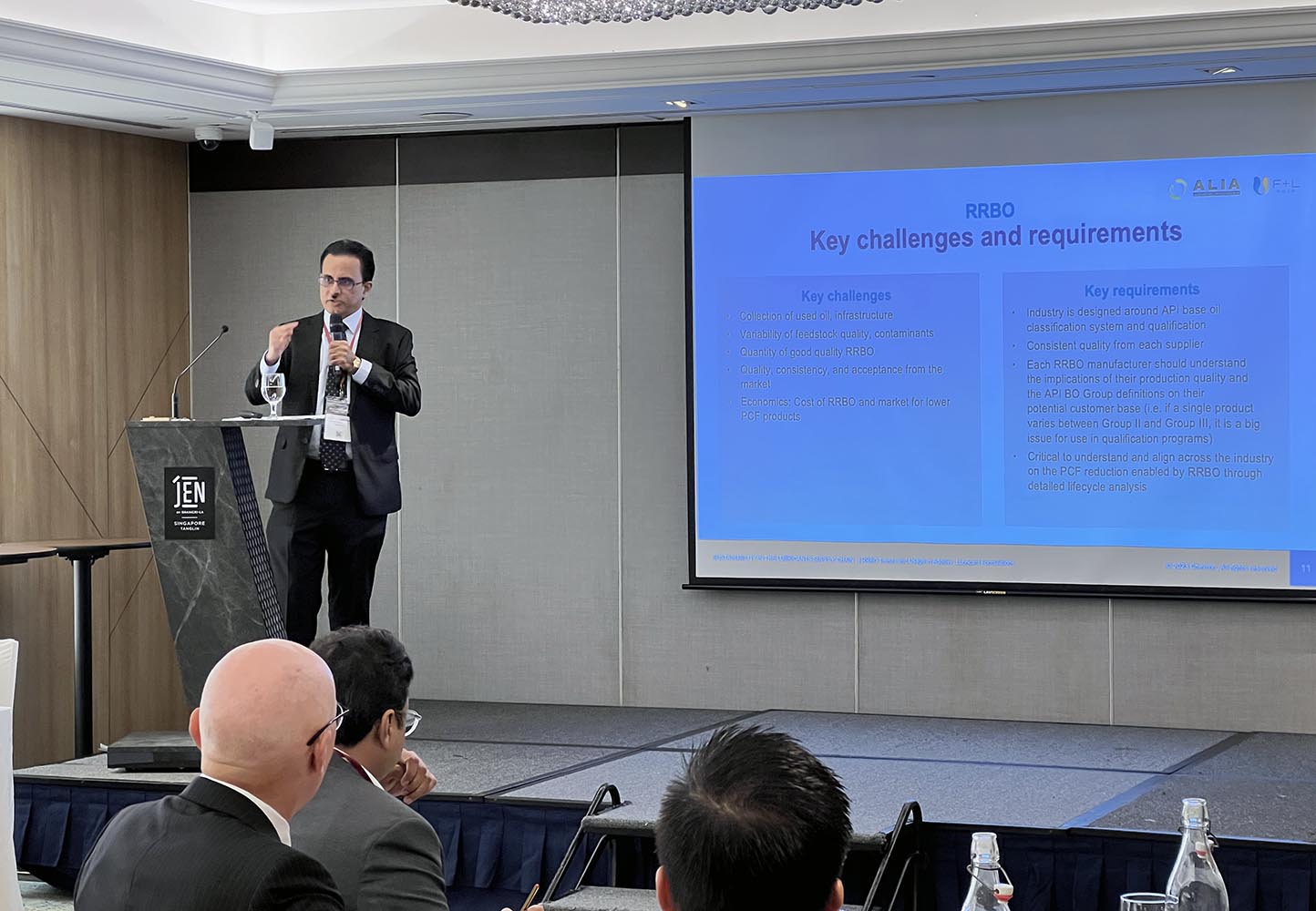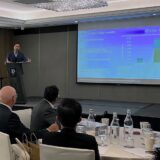
RRBO trends: A sustainable shift in lubricant formulations
Re-refined base oil (RRBO) is gaining traction as a sustainable alternative to traditional base oils and is becoming increasingly accessible. RRBO is witnessing increasing adoption in additives/lubricants for automotive, industrial and marine applications.
The ALIA Seminar on Sustainability in the Lubricants Supply Chain, held on November 6-7, 2023, at the Jen Singapore Tanglin by Shangri-La, Singapore, provided a platform for Chevron Oronite’s Raj Padmanabhan, Asia-Pacific Regional Product Line manager, to outline RRBO Trends and Usage in Additive and Lubricant Formulations, offering a snapshot of the global RRBO landscape.
Asia Pacific leading the way
Asia-Pacific is the largest producer of RRBO. China, in particular, has been a frontrunner with numerous producers and a steadily increasing consumption rate. China’s regulatory framework, governed by the T/CRRA 0901-2018 Recycled Lubricant Base Oil issued on April 6, 2018 which became effective on June 1, 2018, ensures rigorous oversight. Approved capacity stands at 13.63 million metric tons, although actual circulation in the market is significantly lower, says Padmanabhan. Due to high prices, small enterprises may be forced out of the China market, he says.
Government mandates and OEM preferences
Some original equipment manufacturers (OEMs) are beginning to insist on a minimum RRBO content in lubricant products. Several governments are also taking strides to introduce mandates on RRBO usage, including Turkey and India.
India is set to introduce an RRBO mandate on April 1, 2024, and has released a draft notification. All finished lubricants sold within the country must contain at least 5% RRBO by April 2024. This requirement is set to increase annually, reaching 50% by 2029. However, wide variability in RRBO quality is a key concern in India. A draft Bureau of Indian Standards (BIS) specification that includes RRBO is expected to be updated by early 2024, says Padmanabhan.
Australia’s well-established market
Australia stands out as one of the more mature RRBO markets in Asia, boasting a well-established value chain and usage. The Australian API Group I market primarily relies on re-refined oils, which contribute around 20% of base oil demand (650 million litres). Good quality RRBOs are available from Southern OIl and Northern Oil refineries, says Padmanabhan. Notably, the Australian government lends strong support to RRBO initiatives.
European regulations and trends
In Europe, used oil management is regulated through European Regulation 1013/2006 and EU Directive 2018/851. Collection rates are high in Western Europe and improving in Central/Eastern Europe, says Padmanabhan. The regulation concerning collection can be tailored by each country under the framework of the EU Waste Management directive. Although most production in Europe is centred around Group I with variable quality, the trend is shifting towards Group II and Group III RRBO. Most RRBO usage in the European lubricant industry is directed towards industrial applications, says Padmanabhan.
U.S. re-refining dynamics
The United States maintains a collection rate of used oil at approximately 72%. Most re-refiners in the U.S.A. and Canada leverage used oil collection to reduce feedstock costs and maintain the quality of the collected used oil. Approximately 60% of the collected used oil is subsequently re-refined into base stock, with most re-refiners producing Group II/II+ base oils. The RRBO market is regulated by 40 CFR part 279 of the U.S. Environmental Protection Agency (EPA). Re-refining capacity is projected to grow by approximately 25% by 2025-2026, says Padmanabhan.
A path to a reduced carbon footprintRRBO holds the potential to significantly reduce the product carbon footprint (PCF) in lubricant formulations. While literature discrepancies regarding RRBO PCFs exist, Padmanabhan detailed a hypothetical comparison of finished oil using RRBO which demonstrated remarkable reductions in PCF—ranging from 50% to 80%—when compared to conventional base oils. More work is needed across the industry to align on PCF methodology and calculations, he says.














